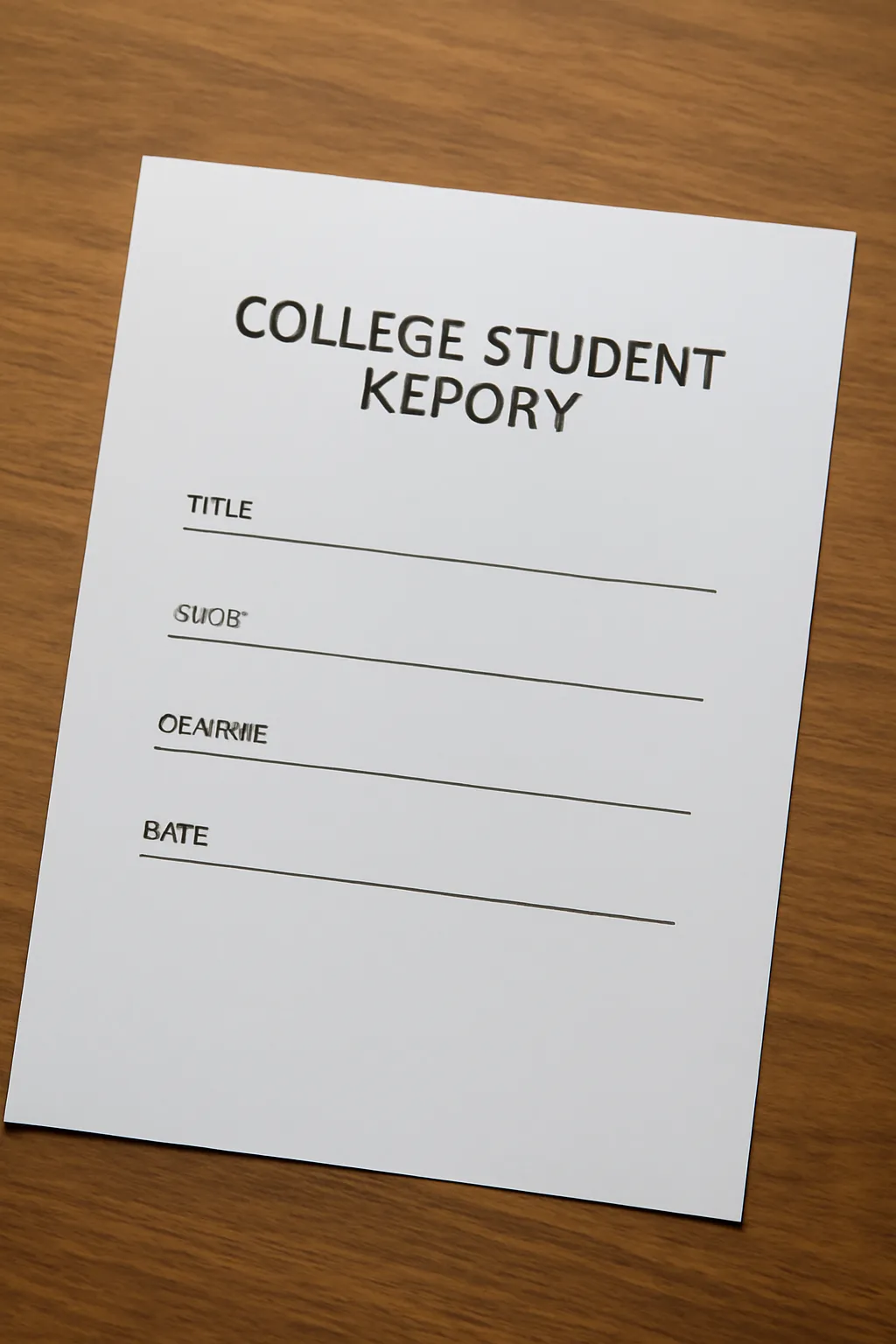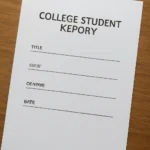Wondering what makes the perfect report cover? How can you design one that meets university standards? Learn how to create the ideal college student report cover form, with tips on layout, essential details, and design to impress your professors.
In the world of academics, the importance of presentation cannot be overstated. A well-crafted report cover form can set the tone for your submission and create a positive first impression. Whether you’re a student preparing for a major assignment or an educator designing a template for your classroom, understanding the elements of a college report cover form is crucial. This guide dives deep into the essential components, layout, and significance of college and university report cover forms, helping you achieve professional presentation standards.
College Report Cover Form: Essential Elements
The college report cover form is more than just a title page. It is the first opportunity to present your work in a clear and professional manner. When designing a report cover form, there are several key elements that must be included to meet university requirements and leave a positive impact on the reader.
Key Features of a College Report Cover Form:
-
Title of the Report This should be the most prominent text on the page. Ensure it’s concise, clear, and accurately reflects the subject matter of your report.
-
Student’s Full Name This is crucial for identification. Include your first and last names clearly, and if applicable, your student number or ID.
-
Course Title or Number The name or number of the course for which the report is being submitted helps contextualize the work.
-
Instructor’s Name Include the name of the professor or instructor overseeing the course or report.
-
Date of Submission This detail helps track the timing of the report and is essential for maintaining academic records.
-
Institution’s Logo Many universities require the inclusion of their logo or a specific header for formal documentation.
Real-Life Example:
When I submitted my first research paper for a marketing course, the report cover page included all the elements mentioned above, with the title of my paper placed prominently at the top. The clarity of the form allowed my professor to easily find my details and assign the appropriate grade. A simple, clean design can make all the difference!
Pro Tip:
To avoid clutter, ensure there is enough white space around each section. A visually balanced cover page is easier to read and feels more polished.
👉 Learn more about creating the perfect college report cover form! 👈
University Report Cover Form: Format and Design
A university report cover form typically follows a specific format that aligns with institutional guidelines. While some universities have their own templates, others leave students to design their own report covers. Understanding the general structure and expectations of a university report cover is essential for academic success.
The Right Design for a University Report Cover:
-
Institution-Specific Header or Footer Some universities include specific guidelines for the header and footer of the report cover. These could involve the use of the institution’s official font or colors.
-
Professional Font Choices Choose a legible, professional font such as Times New Roman or Arial. Avoid decorative fonts that can make the cover look unprofessional.
-
Page Alignment Pay attention to the alignment of text. Ensure that everything is properly centered or aligned as per university requirements.
-
Line Spacing Proper line spacing is essential to avoid overcrowding the page. Typically, 1.5 or double spacing is preferred for readability.
Case Study: My Experience
During my time at university, we were required to submit a detailed business report. The university’s report cover template included a space for our faculty’s logo, followed by the course title, and a section for our student ID. This level of structure made it easy for professors to manage hundreds of submissions efficiently. Having a specific format to follow minimized errors and confusion.
Design Tip:
Consider using design tools like Canva or Microsoft Word templates. These tools often offer university-friendly templates that follow standard formatting rules, saving you time and ensuring accuracy.
👉 Explore templates to design your university report cover form! 👈
University Student Report Form: Key Considerations
The university student report form serves as a standardized document for submitting assignments. Understanding the general format, content, and presentation of the form is key to ensuring academic success.
Key Components of a University Student Report Form:
-
Personal Information Most forms will require basic personal details, such as your full name, student ID, and email address.
-
Course Information Include the course code, name, and semester details. This is vital for professors when categorizing and grading reports.
-
Assignment Details Briefly describe the assignment’s title, type (e.g., research paper, essay), and any instructions provided by the professor.
-
Submission Confirmation Some universities include a section to confirm submission, which might include a checkbox or signature field.
-
Evaluation Criteria Some forms provide space for grading rubrics or marks allocation, which helps students understand what is expected.
Real-World Application:
For my final year dissertation, the university required a specific form to accompany the submission. It included sections for all of the details mentioned above. This structured format allowed me to keep track of my submission, ensuring all the necessary documents were included, and gave my professor all the information they needed upfront.
Reminder:
Always check with your university or department for specific guidelines related to formatting. Some institutions might require additional details, such as word count or digital submission confirmation.
👉 Discover more about university student report forms and how to fill them out! 👈
Conclusion: Why Report Covers Matter
In conclusion, a college student report cover form is not just a formality; it is an essential part of your academic presentation. It offers a glimpse into your professionalism and organization and sets the tone for how your work will be received. Whether it’s for a course assignment or a dissertation, a well-designed report cover ensures that your work stands out.
Remember, every detail counts, from the title of your report to the choice of font. Pay attention to university guidelines, and use templates to ensure that you’re meeting expectations. A clean, organized report cover form will reflect positively on your work, boosting your credibility in the eyes of your professors.
“The difference between ordinary and extraordinary is that little extra.” – Jimmy Johnson
By giving attention to the smallest of details, like a neat and proper report cover, you’re already ahead of the curve.






